If you want to make the most of your Weber griddle, it’s essential to keep it in top-notch condition. Learning how to clean Weber griddle properly not only keeps your food tasting great but also extends its lifespan. A clean griddle surface ensures consistent heat distribution, prevents rust, and helps avoid unwanted flavors from past meals interfering with your culinary creations.
Begin by allowing the griddle to cool slightly after cooking but not completely, as cleaning is easier while it’s still warm. Use a scraper to remove excess food particles and grease from the surface, ensuring you gather debris into the grease trap for disposal. For stubborn residues, apply a small amount of warm water to the surface—this will help loosen any stuck-on bits. Avoid using harsh chemicals or abrasive tools, as these can damage the griddle’s surface. Finish by wiping it down with a clean rag or paper towels until completely dry, and apply a thin layer of oil to maintain its seasoning and protect it from rust.
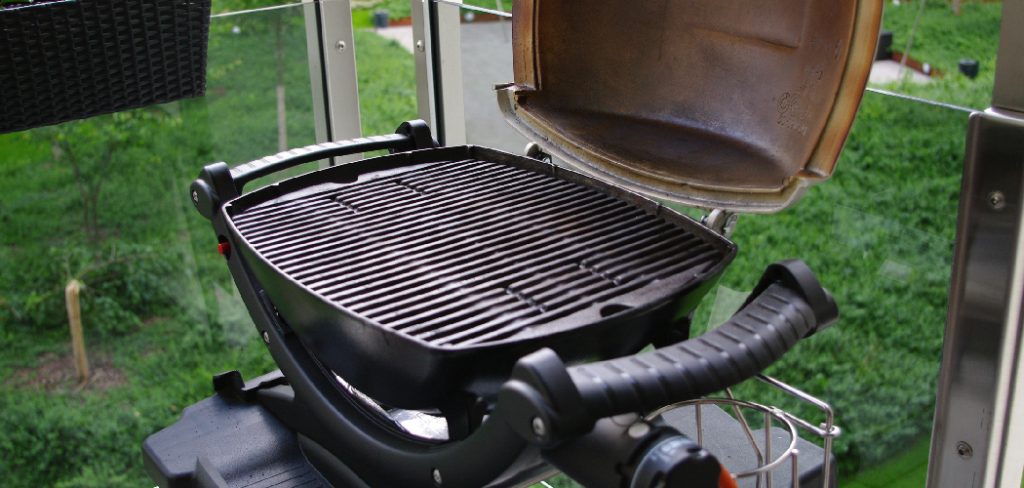
Whether you’re a seasoned griddle master or a complete beginner, this guide will walk you through the steps needed to maintain your Weber griddle with ease. Cleaning might not seem like the most exciting part of outdoor cooking, but once you see how straightforward and rewarding the process can be, you’ll never want to skip it again!
Why Maintaining a Clean Weber Griddle is Essential
A clean Weber griddle doesn’t just look good—it performs better. Residue from previous meals can build up and create uneven heat, leading to inconsistent cooking results. Over time, the grease and food particles baked onto the surface can become a breeding ground for bacteria, posing health risks.
On top of that, cooking with an unclean griddle can impart unpleasant flavors to your food. For example, last night’s stir-fry might not pair great with this morning’s pancakes. Regular cleaning prevents those unwanted cross-flavors, maintains the griddle’s non-stick properties, and promotes longevity, protecting your investment for years to come.
8 Step-by-Step Guide on How to Clean Weber Griddle
Cleaning your griddle may sound tedious, but rest assured—it’s a manageable process that delivers satisfying results. Follow these detailed steps to achieve a sparkling clean Weber griddle, keeping it ready for future grilling adventures.
Step 1: Prep and Cool the Griddle
Before you start the cleaning process, make sure the griddle has cooled down completely after use. A hot griddle can cause steam burns if cleaned too soon, and working on a scorching surface can damage cleaning tools not rated for high temperatures.
However, cleaning the griddle while it still holds some residual warmth can make it easier to remove residue. Wait until it’s just warm to the touch, ensuring safety but also an easier cleaning process. Remove any loose food particles or large chunks using a spatula to get started.
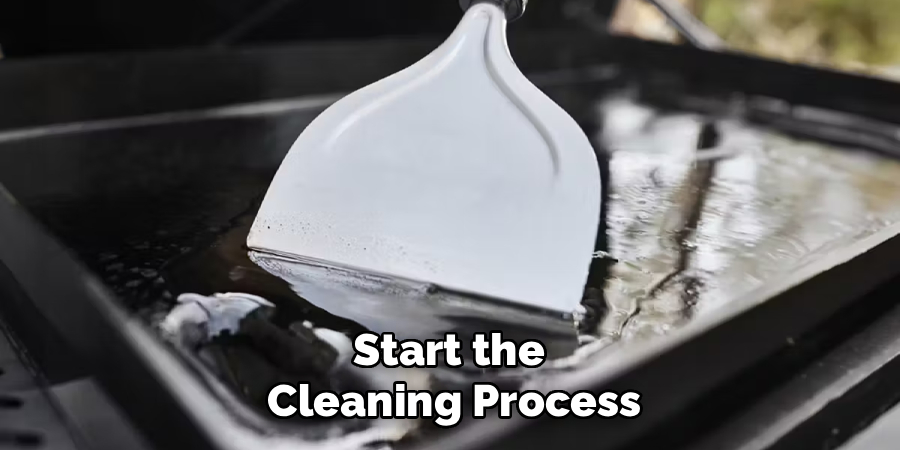
Step 2: Wipe Down the Surface
Grab a damp cloth or paper towel and wipe down the surface of the griddle. This will help remove grease and any remaining food debris. Focus on working in smooth, even strokes to catch every corner. For stubborn patches of grease, consider using a bit of mild dish soap diluted in warm water to break down the residue.
This step is perfect for both post-cooking cleaning and general maintenance. Removing grease right away prevents it from hardening and forming stubborn layers over time.
Step 3: Scrape Away Stubborn Residue
Sometimes, stubborn food particles stick to the griddle surface and refuse to budge. When this happens, use a grill scraper or one designed specifically for griddles. Gently scrape the surface in straight lines to avoid damaging the griddle’s coating.
You may encounter carbonized bits that seem particularly resistant; in these cases, take your time and repeat the scraping process. Patience is key to removing burned-on residue without scratching or harming the surface.
Step 4: Apply a Cleaning Solution
For particularly tough cleaning days, a Weber-compatible griddle cleaning solution can do wonders. Apply the cleaning product evenly across the surface and allow it to sit for a few minutes. Many griddle cleaning solutions are formulated to dissolve hardened grease and grime effectively, making your job much easier.
Always follow the instructions on the cleaning product label to ensure you’re using it correctly. Once applied, use a non-abrasive pad to scrub the surface gently, removing even the toughest stains.
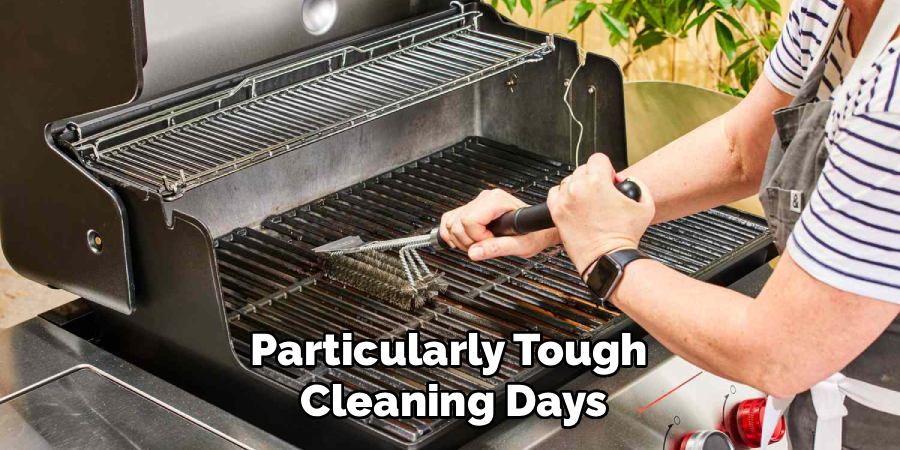
Step 5: Spend Time on the Grease Manager
Weber griddles are equipped with a grease management system that collects excess drippings. This area often goes unnoticed, but it’s critical to keeping your equipment in great shape. Remove the grease tray, discard the contents, and wash it thoroughly using warm, soapy water.
Neglecting the grease trap can lead to greasy buildup that’s not only unsanitary but can also attract pests. Make a habit of cleaning it every time you clean your griddle surface.
Step 6: Rinse Thoroughly
Once the surface and grease tray are clean, rinse everything thoroughly with warm water. Use a clean cloth to remove any remaining cleaning solution, grease, or debris from the surface, leaving it spotless.
Leaving any residue, including soap or cleaning products, can affect the flavor of your meals. Rinsing is an essential step to ensure that your griddle is ready for its next use.
Step 7: Dry and Season the Griddle
After rinsing, dry the surface completely using a clean towel. Any moisture left behind can promote rust, which is why thorough drying is essential. Once dry, season the griddle by applying a thin layer of high-heat oil like flaxseed or grapeseed oil. Heat the griddle slightly until the oil forms a smooth coating.
This protective layer prevents corrosion, improves the non-stick surface, and ensures your griddle lasts longer. Make seasoning your griddle a regular part of your cleaning routine for the best results.
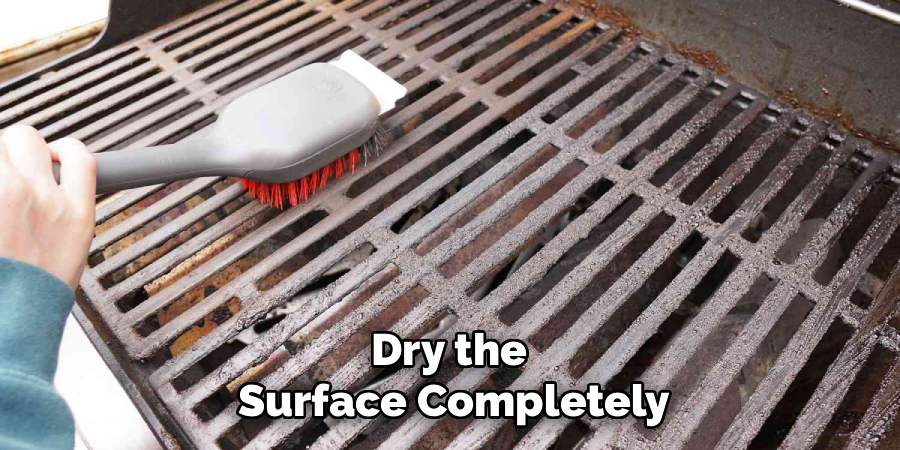
Step 8: Perform a Final Inspection
Before storing your griddle, give it a final check to ensure no grease or residue remains. Run your hand lightly across the surface to verify it feels smooth and clean. Inspect the grease tray one last time and ensure all tools and equipment have been washed and put away.
A quick inspection saves time later and ensures your next cooking session starts on the right footing.
Cleaning Frequency Recommendations
To keep your griddle in optimal condition, it’s important to clean it regularly based on how often you use it. For frequent use—several times a week—perform a thorough cleaning after each cooking session to prevent grease buildup and maintain the surface. If you use your griddle occasionally, cleaning it after every use and performing a deeper cleaning monthly is sufficient. Additionally, seasonal maintenance, such as re-seasoning the surface and checking for wear, can prolong the lifespan of your griddle and ensure it always performs at its best.
Proper storage is another crucial aspect of griddle maintenance. Always ensure your griddle is completely dry before storing it to prevent rust from forming. Use a griddle cover or store it in a dry, sheltered location to protect it from dust, moisture, and environmental elements. If you live in a humid climate, consider adding a moisture absorber or silica gel packets to the storage area for extra protection. Taking these precautions will help keep your griddle in excellent condition and ready for use whenever you need it.
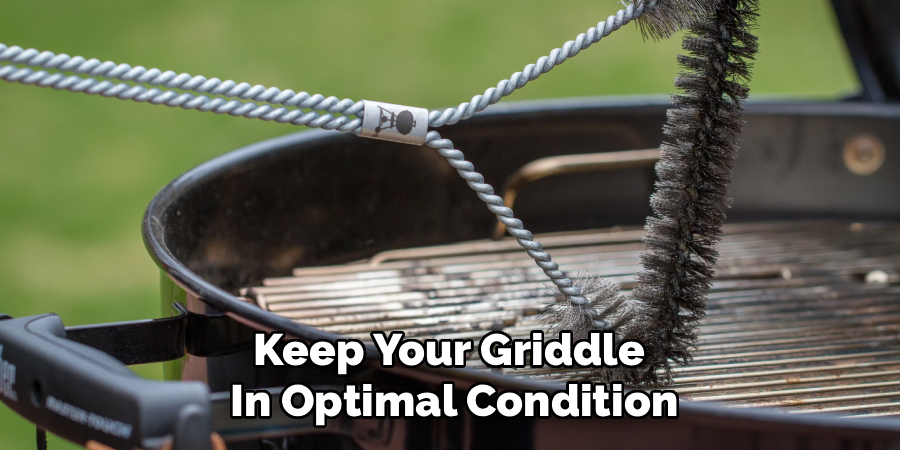
Frequently Asked Questions Section
How often should I clean my Weber griddle?
You should clean your Weber griddle after every cooking session. A quick wipe-down and grease removal are usually enough for routine maintenance. For a deep clean, aim to do it every month or after several heavy cooking sessions. Regular cleaning prevents buildup that can damage the griddle over time.
Can I use soap to clean my griddle?
Yes, you can use mild dish soap for cleaning your Weber griddle. Avoid using anything too harsh, as it can strip the seasoning and damage the surface. Always rinse thoroughly to remove all soap residue before seasoning the griddle again.
What oil is best for seasoning a Weber griddle?
The best oils for seasoning your Weber griddle are those with a high smoke point, such as flaxseed oil, grapeseed oil, or canola oil. These oils create a smooth, durable layer that protects the griddle and enhances its non-stick properties.
How do I remove rust from a Weber griddle?
To remove rust, gently scrub the affected areas using steel wool or a non-abrasive scrub pad. Apply a little water and oil to help loosen the rust. Once the rust is removed, clean the griddle thoroughly, dry it completely, and re-season the surface to prevent further oxidation.
Is it safe to use a commercial griddle cleaner?
Yes, commercial griddle cleaners designed for use with Weber equipment are safe and effective. Always ensure the cleaner is food-safe and compatible with your griddle material. Follow the manufacturer’s instructions for the best results, and rinse thoroughly after cleaning.
Conclusion
Proper maintenance is key to enjoying your Weber griddle for years to come. By following the detailed steps outlined above on how to clean Weber griddle, it’s easy to keep your grill surface spotless and cooking-ready. With routine cleaning, you’ll savor the flavors of your meals until the very last bite.
Regular care not only extends the life of your Weber griddle but also ensures consistent performance. A clean griddle prevents food from sticking and allows for even heat distribution, guaranteeing perfectly cooked meals every time. Paying attention to maintenance also reduces the risk of residue buildup, which can impact the flavor of your food. Taking a few extra minutes to care for your griddle after every use will go a long way in preserving its quality and efficiency.
Now that you know how easy it is, take the time to maintain your griddle after each use. Cleaning isn’t just about hygiene; it’s an investment in the taste and quality of your food. Grab your tools, roll up your sleeves, and enjoy the satisfaction of grilling on a pristine Weber griddle!
Professional Focus
Angela Ervin, a former interior designer turned blogger, specializes in kitchen design and renovations. Through her website, she blends her passion for cooking with design expertise, sharing practical and creative ideas. Known for balancing functionality and beauty, Angela’s insightful content has made her a trusted voice in home design and lifestyle.
About the Author
Angela Ervin, an experienced interior designer and blogger, combines her passion for kitchen renovations with storytelling. Living in Petersburg with her family, she enjoys cooking and testing her projects firsthand. Known for her humor and relatable style, Angela shares creative, functional design insights through her content, making her a trusted voice in home design.
Education History
University: Virginia Commonwealth University
Degree: Bachelor of Fine Arts (BFA) in Interior Design
- Angela’s education at VCU focused on mastering core interior design principles, including spatial planning, color theory, materials selection, and sustainable design practices.
- She gained hands-on experience through studio projects and collaborative design exercises, which honed her ability to create functional and aesthetically pleasing environments.
- Her coursework also emphasized problem-solving and practical applications of design, preparing her for real-world projects like her self-directed kitchen renovations.
- The program’s strong foundation in both technical skills and creative expression shaped Angela’s ability to seamlessly integrate form and function in her work.
